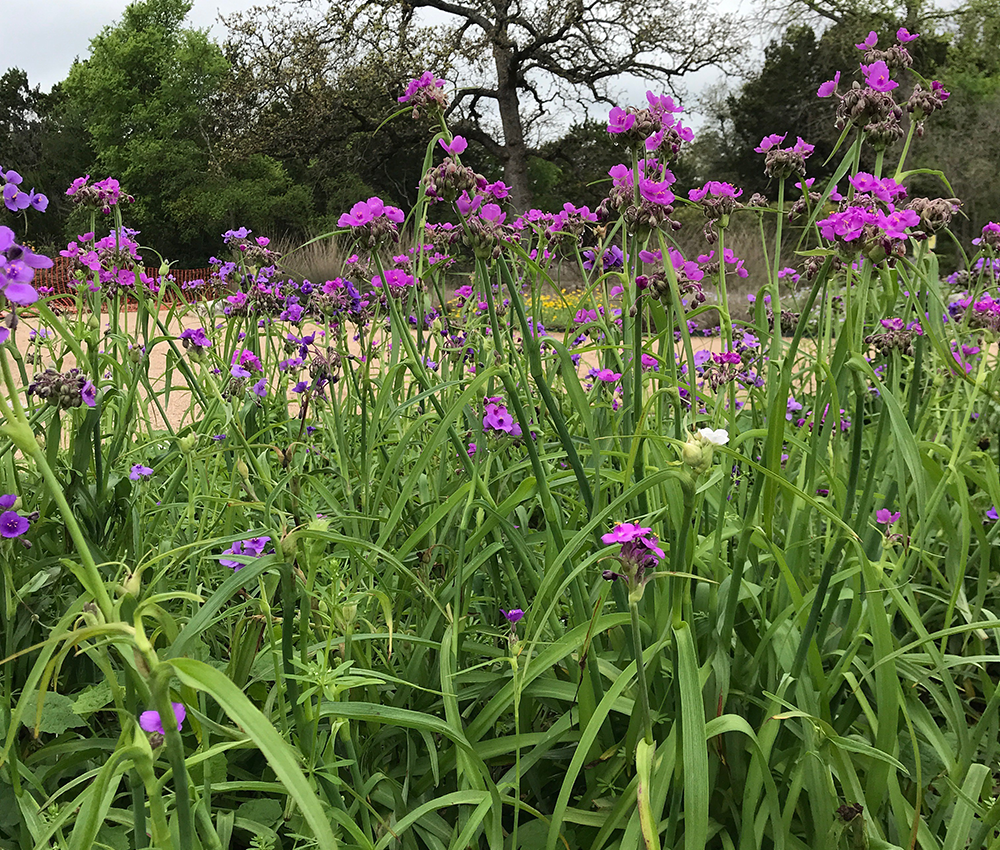
April is a great time to plant your spring vegetable garden if you haven’t already. If you live in the more northern reaches of the Southern Plains, April is likely your first chance to plant. Those of us in Central and South Texas have likely been frost-free for at least a couple of weeks by now. Cool-season vegetables will really be winding down this month, although some may last through May farther north. As soon as you pull them from the garden you can replace them with warm-weather crops such as tomatoes, peppers, watermelon, cantaloupe, green beans, eggplant, squash, pumpkins, and tomatillos. If you plant tomatillos, plant two! They are not self-fertile, so you’ll need to have two plants for them to fruit.
Don’t forget the herbs, which will make your vegetable harvest that much more delicious. April is a good time to plant tried-and-true herbs such as basil, oregano, thyme, and fennel, as well as the lesser-used but equally fabulous lemongrass, lemon balm, catmint, and horseradish.

With increased plant growth in April comes an increase in pests. Check your garden plants for pests regularly this month so that you can catch problems early before they cause too much damage. Things to look out for:
- Tomato hornworms. These bugs are huge, so they are hard to miss. Simply pick them off your tomato plants and squish them, or give them to your chickens as a treat if you happen to keep chickens. You can also spray them with Bt (Bacillus thuringiensis).
- Squash borers. Spraying your squash plants with Bt once a week can help prevent squash borers as well. Another method for prevention is to lay floating row cover over your row of just-planted squash seeds. Keep the row cover in place as the plants grow, making adjustments as needed. Since you will not only be excluding squash borers but also pollinators from your plants, you’ll need to hand-pollinate your squash blossoms.
- Stink bugs. Stink bugs love to bother tomatoes, so pick these guys off when you see them, and throw them to the birds. I find they tend to be more of a problem later in the summer, but start looking for them now.
- Aphids and spider mites. These tiny pests can be sprayed off with a hard blast of water from the hose. How hard? Just hard enough so that you don’t damage your plants.

Deadhead fading blooms. The flowers of the early spring bloomers will be fading by April. You can cut the old and fading blooms to encourage the production of new ones. I’ve found that this is a much-loved gardening task for many gardeners. Something about taking out the old to bring in the new is especially satisfying.

Share seeds and seedlings with your fellow gardeners! When you’re putting in your garden this month, make sure to ask your friends what they are planting this year. Share notes, along with seeds and plants. Leave some space in your garden for experimental new plants that you may get from fellow gardeners. Don’t have any friends who garden? Look for a public seed or plant exchange in your area.

It’s time to start thinking about your lawn in earnest. In Central Texas I usually have to mow twice in February and March, but in April mowing starts to be a more regular task. Make sure you are mowing before any weeds have a chance to go to seed. This is also a great time to lay sod for warm-season grasses. Sod laid in April will have time to establish good roots before the heat of summer sets in in June.
April is also a good time to fertilize your lawn, because the grass is actively growing now and able to take up the fertilizer. Granular fertilizers tend to be more economical than liquid ones, with less risk of burning the grass. There are a number of granular organic options on the market, such as Espoma, Safer Brand, and Dr. Earth. Read the bag carefully and follow the application instructions. In general, you want to avoid applying more than one pound of nitrogen per 1,000 square feet of lawn.

You may need to water your plants more than you realize. Although it’s not summer yet, the warm temperatures, abundant sunshine, and dry winds of April can dry out plants, especially tender new ones. Keep tabs on your garden beds, your lawn, and any shrubs or trees that are still getting established. And while you’re at it, give yourself a drink of water too!
—Karen Beaty is a horticulturalist at the Lady Bird Johnson Wildflower Center in Austin, Texas.


















Comments
Log in or create an account to post a comment.
Sign up Log in